When most people think of COSTA RICA OUTWARD BOUND, they think of surfing; waterfall rappelling; trekking volcanoes; sea kayaking; camping in the jungle; sailing; white water rafting; SCUBA diving; zip-wire flying; and other outdoor adventure sports. But what few may not know is that two core values of COSTA RICA OUTWARD BOUND are community service and intercultural exchange.
At the beginning of this month, from July 3 to July 15, the Girl Scouts Underwater Explorers II (2010), lead by professional and super-fun CRROBS instructors Donna White, Lisa Purul and Carola Coto Mora, took a boat out to our remote base camp on Isla Solarte, located in the Bocas del Toro archipelago, of Panama. When the girls weren’t “playing” in the water, they were playing with the local indigenous children and helping around the community.
Their first service project task was to drain and clean out all the rain-water run-off silt and muck from the local “ojo de agua” (water supply reservoir.) This enabled the entire community access to cleaner water. The second part of their service project was to script, direct and perform educational skits around local issues such as nutrition, cleaning up beaches and roads, as well as how to prepare food more safely for local school children.
The Girl Scouts emphasized the importance of a well-balanced diet and distributed rice and lentils to local school children, instead of their typical “rice and plantains” –because of the high protein levels in lentils. The Girl Scouts also inspired most of the local community to come out early one Saturday morning and do a clean-up of beaches and roads around the island. And lastly, the Girl Scouts introduced a new kind of stove which is cleaner and safer both for the environment and the families using the stove!
Check out the videos below of the skits that the Girl Scouts Underwater Explorers II (2010) scripted, directed and performed themselves…do I smell an Oscar?!!!
We are so proud of all of these girls!!
Skit 1:
Skit 2:
Skit 3:
Skit 4:
Showing posts with label Panama. Show all posts
Showing posts with label Panama. Show all posts
Friday, July 16, 2010
Wednesday, June 30, 2010
Summer Service in Panama
It's not often you supply food to an island of indigenous people who actually need it.
And by "actually," we mean that even a home full of fifteen orphans did not have anything to eat last Saturday the 19th until eight Girl Scouts and their two instructors arrived with bags of food.
Two weekends ago, Girl Scouts Underwater Explorers students - with their Costa Rica Outward Bound instructors Mariana and Erin - completed a meaningful service project in Panama.
The group packed bags of food (including rice and lentils) at our base camp on Isla Solarte located in the Bocas del Toro archipelago. After spending 1-2 hours organizing hundreds of food packets, they took a boat taxi to Tierras Obscuras (meaning "dark lands") to deliver them to homes and schools. This is when they met the woman with fifteen hungry orphans. They also met some of the locals and observed the classroom settings. It had a profound effect on them, and they spent the afternoon discussing it.
This will not be the end of our community service in this region. When other Costa Rica Outward Bound courses head to Panama this summer, we hope to help by supplying fresh water to some of the islands. Scott Brown, our Associate Program Director, has been coordinating projects with Operation Safe Drinking Water which organizes projects for delivering water tanks and building fresh drinking water systems in areas where inhabitants are drinking dirty water and getting sick. Students' jobs will be to help install rain catchment tanks for indigenous schools and villages in order to catch, store and share the pure rainfall.
We are excited to have found another way to integrate Community & Service, one of our core value elements, into the courses' Panama Phases. Pura vida!
And by "actually," we mean that even a home full of fifteen orphans did not have anything to eat last Saturday the 19th until eight Girl Scouts and their two instructors arrived with bags of food.
Two weekends ago, Girl Scouts Underwater Explorers students - with their Costa Rica Outward Bound instructors Mariana and Erin - completed a meaningful service project in Panama.
"It's amazing that people live that way.... maybe we shouldn't complain as much as we do about small stuff," one of the Girl Scouts reflected after completing the project.
This will not be the end of our community service in this region. When other Costa Rica Outward Bound courses head to Panama this summer, we hope to help by supplying fresh water to some of the islands. Scott Brown, our Associate Program Director, has been coordinating projects with Operation Safe Drinking Water which organizes projects for delivering water tanks and building fresh drinking water systems in areas where inhabitants are drinking dirty water and getting sick. Students' jobs will be to help install rain catchment tanks for indigenous schools and villages in order to catch, store and share the pure rainfall.
We are excited to have found another way to integrate Community & Service, one of our core value elements, into the courses' Panama Phases. Pura vida!
Tuesday, June 22, 2010
Our Shiny New Beast

Well, we finally did it.
 When Scott returned from a seven-day cat-and-mouse journey in Panama last week, we knew it meant one thing: the new van finally arrived.
When Scott returned from a seven-day cat-and-mouse journey in Panama last week, we knew it meant one thing: the new van finally arrived.He summarized his cultural experience:
"Nowhere are the differences between Central America and North America more evident than in the navigation of law, bureaucracy and borders."
 In short: it wasn't easy.
In short: it wasn't easy.

To acquire such a beautiful beast of auto-mechanic machinery (as you can clearly see in the photos on the right), we practically had to sell Scott's soul to make it happen:
Step 1: Research a safe and roomy van to transport our students around Costa Rica. Jim Rowe, our Executive Director, found the Toyota Hiace.
Step 2: Find a dealership selling the it. Costa Rica was sold out of the 2010 model, so Jim turned to a dealership in David, Panama.
Step 3: Jim spent a week in Panama negotiating the purchase of the brand new vehicle. The dealership agreed to do all of the paperwork necessary to bring the van across the border to Costa Rica.
 Step 4: A month later, Scott Brown, our Associate Program Director, flew to Panama to pick up the van, expecting a seemless transaction to bring it back to our San Jose base. He forgot he was in Central America.
Step 4: A month later, Scott Brown, our Associate Program Director, flew to Panama to pick up the van, expecting a seemless transaction to bring it back to our San Jose base. He forgot he was in Central America.Step 5: Surprisingly, the dealership did not have the legal certification of ownership they promised - they gave him a "Bill of Sale" to use at the border instead because "that should work."
 Step 6: After a 1.5-hour drive to the border, Scott learns his documentation is worth the same as a stack of Post-Its, and he must wait until Monday when the "official" transit office is open for proper documentation.
Step 6: After a 1.5-hour drive to the border, Scott learns his documentation is worth the same as a stack of Post-Its, and he must wait until Monday when the "official" transit office is open for proper documentation. Step 7: Scott spends a weekend in some sketchy hotels.
Step 8: Monday morning - Scott obtains a "document of certification" from the transit office.
 Step 9: Monday afternoon - the border patrol again tells Scott his documentation is worth nothin.
Step 9: Monday afternoon - the border patrol again tells Scott his documentation is worth nothin.Step 10: Tuesday morning - Scott returns to the transit office where he informs them of their incorrect documentation. Their response: he can not receive the documents the border requested because Scott is neither Panamanian nor Costa Rican. His next step was acquire a "re-exportation" form that includes a Bill of Sale. This will help the border people properly tax Scott with duty fees.
Step 11: Tuesday mid-day - Scott arrives at a lawyer's office where he is told to pay a lot of money for the lawyer to make four copies of the necessary documentation.
Step 12: Tuesday afternoon - Scott arrives at the border, and they allow him to leave Panama. But Costa Rica (and a train of six locals trying to "help") wouldn't let him enter without speaking to (and paying for) a border lawyer for more "documents."
Step 13: Scott ignores them and checks into a dodgy Panamanian hotel for the night.
Step 14: Wednesday morning - Scott makes it to the border very early to avoid the border people (who had been complicating the situation). Costa Rica allows Scott - and the van - to enter. He drives five hours back to base.
Step 15: Costa Rica Outward Bound drops the van off at a type of "quarantine" holding center (called Almecen Fiscal) where Costa Rican officials kept it for a few days to perform a full legal inspection.
Step 16: Costa Rica Outward Bound sent the car to the Reteve for a thorough mechanic inspection... twice.
Step 17: Wait for our Costa Rican license plate and our Costa Rica Outward Bound sticker logos to arrive...
And now, after the month of headaches to acquire this shiny new eye candy for our base, we are almost ready to use it for the Busy Season. But until then, we can stick our heads into it a few times a day to appreciate that new car smell.
Read more blogs about 2010 new equipment:
Rafts
Surfboards
Backpacks
Rash guards
Z-Rests
Monday, May 24, 2010
Solarte: Our Panamian Home
Most students' friends and family get different images in mind when reading the update, "Students are in Panama this week..."
While most envision the Panama Canal (which is actually about 12 hours away by bus) and/or the commercialism that it brings, they would be surprised to learn about the beauty of both the scenery and the culture in Solarte (pictured right) where Costa Rica Outward Bound students stay.
Just 20 miles south of the Costa Rican border lies the Archipelago of Bocas del Toro, Panama, a cluster of six principal islands that forms a province on the Caribbean Sea. It is famous for its luscious palm forests spreading over the islands, an extensive coral reef system that is a snorkeler's playground, and beautiful clear water full of tropical fish. One of these islands, Isla Solarte, is the destination for all Costa Rica Outward Bound courses that involve a SCUBA portion, including all semester courses (Water & Wave, Tri-Country, and Leadership) summer courses.
The Archipelago of Bocas del Toro was originally discovered in 1502 by Christopher Columbus and became an often-visited spot by pirates during the 17th century. On their underwater dives or in their rainforest hikes, many Costa Rica Outward Bound students hope to find buried treasure that is rumored to still be hidden in the area.
Solarte's defining geographical feature is Hospital Point, so named after the hospital built there in the 1900s by the United Fruit company to quarantine yellow fever and malaria patients. The hospital was abandoned in the 1920s when the United Fruit company shut down operations on Solarte due to a plague that knocked out most of the banana plants. Much of the snorkeling done by Costa Rica Outward Bound students takes place around this point.
Students arrive on Solarte via water taxis (taxis marinos) and are immediately greeted with a view of palm trees, greenery, and clear water. Houses nearby are made from boards of wood, often with thatched roofs. Solarte also has a simple structure which serves as the community's church and a small school right behind the rancho where Costa Rica Outward Bound students stay. The nearby field serves as a soccer field, and in between scuba dives students have ample opportunity to join in futbol, especially in the evening. During the day, the temperature is very warm, and when it is windy it can get very windy. In order to escape the sun's intense rays, students turn to Duckies, inflatable kayaks that provide a wonderful way to get a closer look at the crystal clear Caribbean waters.
Costa Rica Outward Bound students have been visiting this island populated with indigenous tribes for over seven years, and are always looking for ways to give back to the community. In fact, Leader's Challenge of Colorado did a major service project in March 2009 when they installed working toilets for the Guaymi tribe. (Read about it here.)
Every year we explore new places to go with students, new outdoor activities, and new service projects. And because of our last Panamanian reconnaissance mission, we have recently added a plethora of courses and activities in Panama including: Panamanian Kayaking Adventure, Volcano Exploration and Panama Adventure, Outward Bound USA's sea kayaking phase of their semester course, and our Girl Scouts Underwater Explorers course.
Read more blogs about Panama: Panama: Undiscovered Territory, Panama: Lionfish Invasion, Busy in Panama, Leadership Semester SCUBA in Panama, SCUBA in Panama
Article donated by former Communications Director, Kathleen Sullivan.
While most envision the Panama Canal (which is actually about 12 hours away by bus) and/or the commercialism that it brings, they would be surprised to learn about the beauty of both the scenery and the culture in Solarte (pictured right) where Costa Rica Outward Bound students stay.
Just 20 miles south of the Costa Rican border lies the Archipelago of Bocas del Toro, Panama, a cluster of six principal islands that forms a province on the Caribbean Sea. It is famous for its luscious palm forests spreading over the islands, an extensive coral reef system that is a snorkeler's playground, and beautiful clear water full of tropical fish. One of these islands, Isla Solarte, is the destination for all Costa Rica Outward Bound courses that involve a SCUBA portion, including all semester courses (Water & Wave, Tri-Country, and Leadership) summer courses.
The Archipelago of Bocas del Toro was originally discovered in 1502 by Christopher Columbus and became an often-visited spot by pirates during the 17th century. On their underwater dives or in their rainforest hikes, many Costa Rica Outward Bound students hope to find buried treasure that is rumored to still be hidden in the area.
Solarte's defining geographical feature is Hospital Point, so named after the hospital built there in the 1900s by the United Fruit company to quarantine yellow fever and malaria patients. The hospital was abandoned in the 1920s when the United Fruit company shut down operations on Solarte due to a plague that knocked out most of the banana plants. Much of the snorkeling done by Costa Rica Outward Bound students takes place around this point.
Students arrive on Solarte via water taxis (taxis marinos) and are immediately greeted with a view of palm trees, greenery, and clear water. Houses nearby are made from boards of wood, often with thatched roofs. Solarte also has a simple structure which serves as the community's church and a small school right behind the rancho where Costa Rica Outward Bound students stay. The nearby field serves as a soccer field, and in between scuba dives students have ample opportunity to join in futbol, especially in the evening. During the day, the temperature is very warm, and when it is windy it can get very windy. In order to escape the sun's intense rays, students turn to Duckies, inflatable kayaks that provide a wonderful way to get a closer look at the crystal clear Caribbean waters.
Costa Rica Outward Bound students have been visiting this island populated with indigenous tribes for over seven years, and are always looking for ways to give back to the community. In fact, Leader's Challenge of Colorado did a major service project in March 2009 when they installed working toilets for the Guaymi tribe. (Read about it here.)
Every year we explore new places to go with students, new outdoor activities, and new service projects. And because of our last Panamanian reconnaissance mission, we have recently added a plethora of courses and activities in Panama including: Panamanian Kayaking Adventure, Volcano Exploration and Panama Adventure, Outward Bound USA's sea kayaking phase of their semester course, and our Girl Scouts Underwater Explorers course.
Read more blogs about Panama: Panama: Undiscovered Territory, Panama: Lionfish Invasion, Busy in Panama, Leadership Semester SCUBA in Panama, SCUBA in Panama
Article donated by former Communications Director, Kathleen Sullivan.
Friday, May 21, 2010
Photos: Panama Discoveries
When we partnered with Outward Bound USA this year to create a semester course that was partially in the Florida Keys and two-thirds in Costa Rica, we had no idea what an unforgettable - and unique - experience it would be for both the students and the instructors. Among them were yours truly, Orlando Zamora and Danny Jimenez, who said nothing else but, "¡Increible!" upon their return.
The photos below tell it all.
During Panama Phase (for the sea kayaking adventure portion promised to them in their semester itineraries), they embarked on an adventure far more exciting and adventurous than most students could ever expect on course. The reason being that few of our students are able to explore uncharted territory with the instructors. And as a result, they found new islands, new activities, and most memorably, new people. Most of the natives from the islands had never seen outsiders before seeing this group of students. We were amazed by the result, and for this we highlighted our favorites in this blog.
(See more of the collection on our flickr page.)
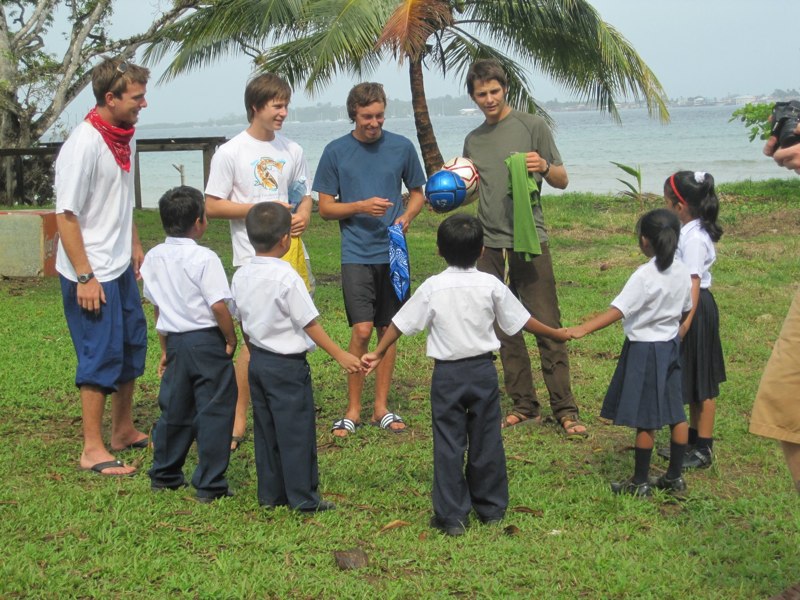
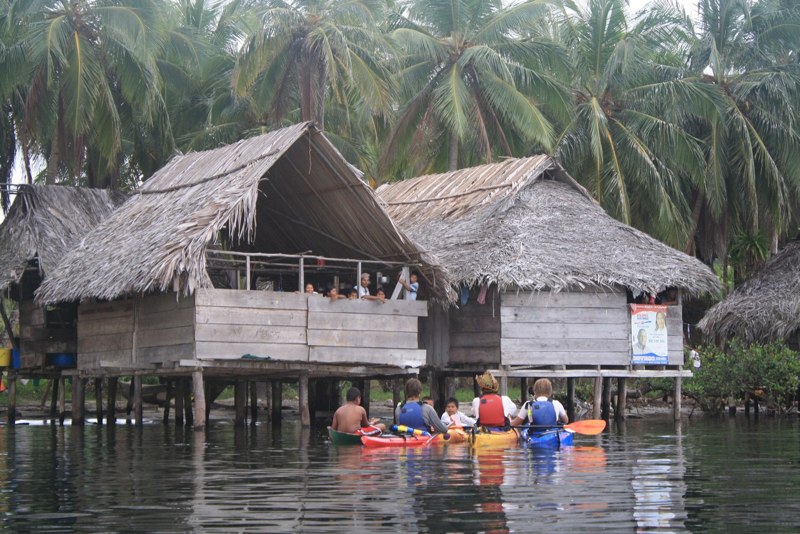
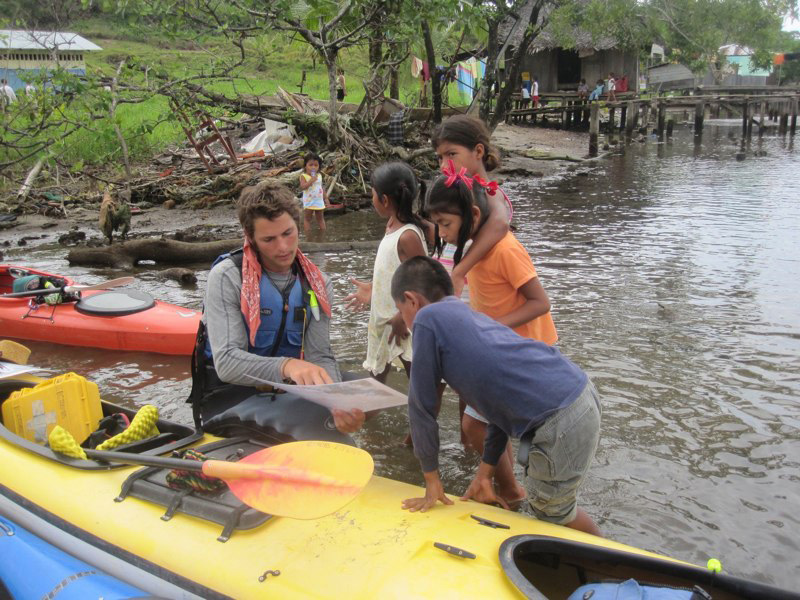
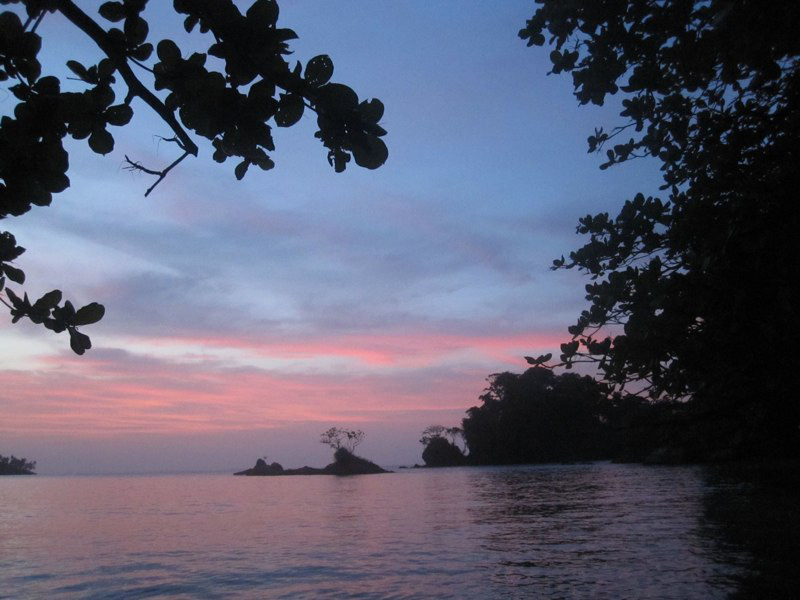
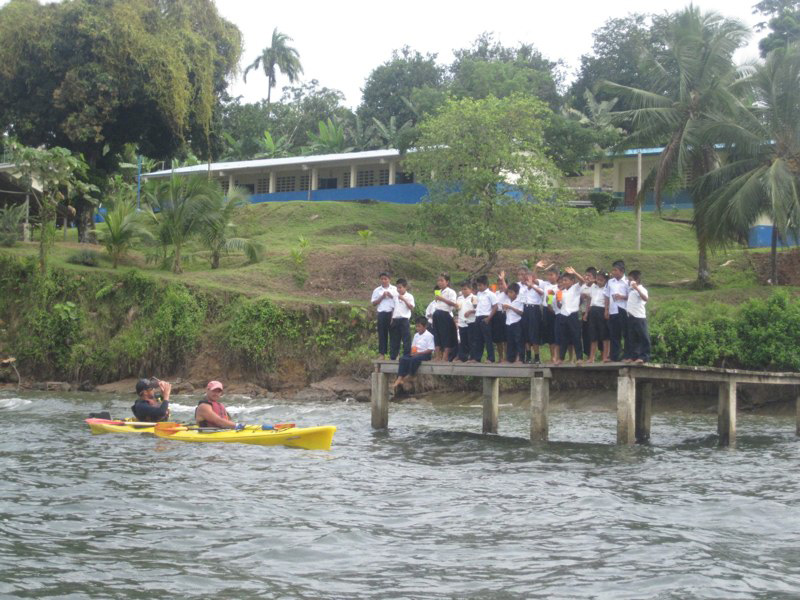
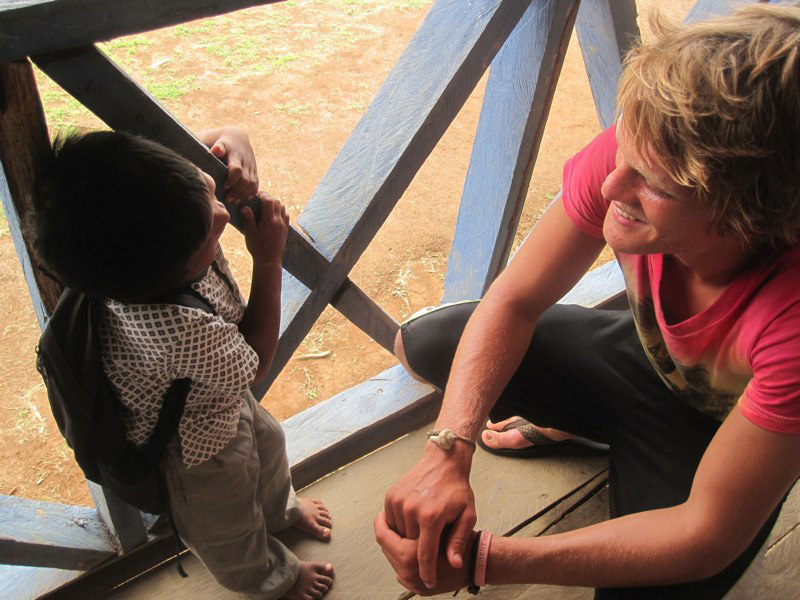
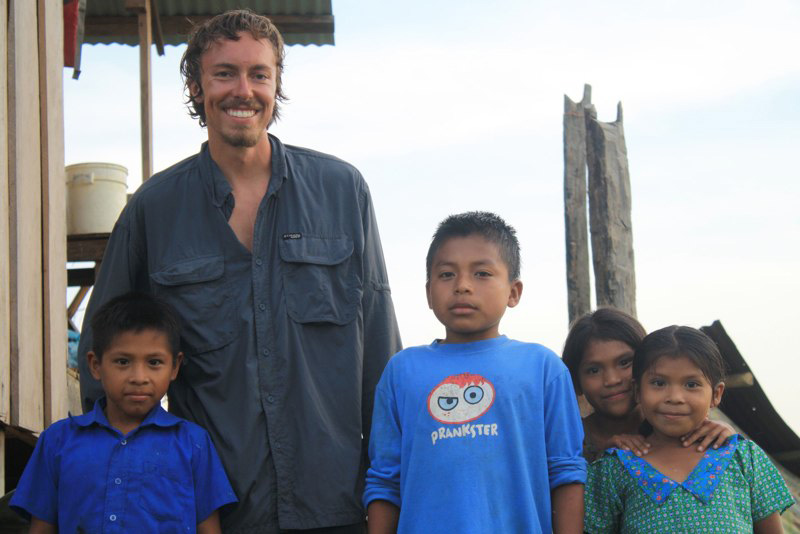
Link to the official web site for their course where we acquired these photos.
The photos below tell it all.
During Panama Phase (for the sea kayaking adventure portion promised to them in their semester itineraries), they embarked on an adventure far more exciting and adventurous than most students could ever expect on course. The reason being that few of our students are able to explore uncharted territory with the instructors. And as a result, they found new islands, new activities, and most memorably, new people. Most of the natives from the islands had never seen outsiders before seeing this group of students. We were amazed by the result, and for this we highlighted our favorites in this blog.
(See more of the collection on our flickr page.)







Link to the official web site for their course where we acquired these photos.
Tuesday, April 6, 2010
Panama Sea Kayak Recon
 re•con [ri-kon]
re•con [ri-kon]-noun
reconnaissance
¿Perdon?
re•con•nais•sance [ri-kon-uh-suh ns, -zuh ns]
-noun
a general examination or survey of a region, usually followed by a detailed survey
"A general examination of a region" is the best way to define our missions out into new, undiscovered territory for updating courses and adding new ones in Costa Rica, Panama, and Nicaragua.
So last fall in Panama, Costa Rica Outward Bound staff members Laura (Program Director), Scott (Associate Program Director) and Jim (Executive Director) set out for one of these missions, finding a the ideal CRROBS sea kayak adventure. (Photos on right are from this trip. Click here for the complete photo album of their recon mission.)
First it's important to know what exactly we seek during these missions in order to add it as an option in our list of courses:

- protected areas
- community service opportunities
- untouched, extremely remote and rural locations
- diverse, beautiful scenery
- varied ecosystem
- educational opportunities
Lucky for them, they found it all in Bocas del Toro, and more. And it was all perfect for a sea kayaking adventure.
Not only was the area overflowing with untouched, protected seas; but it also exhibited varied shorelines, mangrove islands, an interesting history, unique plant and animal species, indigenous communities (with whom we have already done a number of service projects), and lots of open water.
"It's a great experience to be in power of where you go in an area that large... you get a feel for how inhabitants have gotten around for hundreds of years." -Scott
For the past week, our Outward Bound USA students have been - hopefully - making that same discovery. They have kayaked from island to island while learning about Columbus' adventures hundreds of years ago, the unique species of plants and animals, the local people, and how to become expert kayakers. The next students who can see it with their own eyes are our Panamanian Kayak Adventure course students this summer.
It's not every day that you can sea kayak around an area seen by fewer than 1% of the world's population.
Wednesday, March 24, 2010
Panama: Lionfish Invasion
One of the most crucial parts of the scuba certification education process is learning about aquatic wildlife.
Why 'crucial?'
Because a human's touch can be fatal to an entire species; and on the flip side, marine life, too, can be fatal for humans.
The lionfish, while not fatal, does fall in the "danger" category, as it is a poisonous aquatic predator with an incredibly painful sting. The sting can last up to two days and cause some swelling. Immediately, the sting can be treated by frequently immersing the affected area in water no warmer than 114 degrees Fahrenheit until symptoms subside.
Because of its deceptive beauty and its large Panamanian population, our scuba dive masters had to draw special attention to its danger when instructing the Water & Wave and Tri-Country students last week - and OB USA this week - in Bocas del Toro, Panama. It was a helpful lesson because they did, in fact, report having swum very closely with the colorful fish.
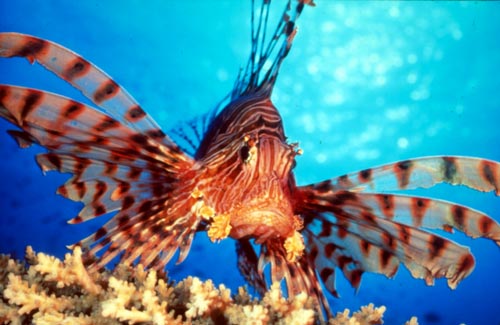
The large and growing population of this South Pacific and Indian Ocean species has become a major environmental issue, not only in Panama, but in the Caribbean and all the way up the US east coast.
It's invasion in this hemisphere is a unique and interesting story.
In 1992, an aquarium broke during Hurricane Andrew and is believed to have released a few lionfish into the Atlantic Ocean. Since then, reports have begun to come in regularly from divers in Florida, all the way up to Massachusetts, and now all the way down to Panama these past 20 years. (Luckily for the northern states, the species’ intolerance of cold winter temperatures means it is unlikely to survive in these areas.)
This is a problem to the marine environment because lionfish are voracious predators that quickly adapt to eating new types of food, and they have no native predators in Atlantic or Caribbean waters. Lionfish have venomous dorsal, ventral, and anal spines that can deter predators and injure humans. They can reproduce year-round and are relatively resistant to parasites, giving them an advantage over native species. They are also fast growing and can outgrow and out-compete native species for food and space. Lionfish are eating fish, invertebrates and coral in large quantities, including juvenile spiny lobsters, parrotfish, and the Atlantic coral reefs. Reefs depend on some of the decreasing reef species to prevent seaweed and macroalgae from overgrowing the corals.
There is no way to really rid the waters of this species, but different diving groups and governements are playing their own part in trying to alleviate the problems. And actually, while the students were in Panama last week, the local paper published an article educating civilians about lionfish and urging people to kill the predator when they get the chance!
A recent article in Smithsonian Magazine reported, "Some experts believe that lionfish are so widespread that their effect on the ecosystems of the Western Atlantic will be almost impossible to reverse."
Why 'crucial?'
Because a human's touch can be fatal to an entire species; and on the flip side, marine life, too, can be fatal for humans.
The lionfish, while not fatal, does fall in the "danger" category, as it is a poisonous aquatic predator with an incredibly painful sting. The sting can last up to two days and cause some swelling. Immediately, the sting can be treated by frequently immersing the affected area in water no warmer than 114 degrees Fahrenheit until symptoms subside.
Because of its deceptive beauty and its large Panamanian population, our scuba dive masters had to draw special attention to its danger when instructing the Water & Wave and Tri-Country students last week - and OB USA this week - in Bocas del Toro, Panama. It was a helpful lesson because they did, in fact, report having swum very closely with the colorful fish.

The large and growing population of this South Pacific and Indian Ocean species has become a major environmental issue, not only in Panama, but in the Caribbean and all the way up the US east coast.
It's invasion in this hemisphere is a unique and interesting story.
In 1992, an aquarium broke during Hurricane Andrew and is believed to have released a few lionfish into the Atlantic Ocean. Since then, reports have begun to come in regularly from divers in Florida, all the way up to Massachusetts, and now all the way down to Panama these past 20 years. (Luckily for the northern states, the species’ intolerance of cold winter temperatures means it is unlikely to survive in these areas.)
This is a problem to the marine environment because lionfish are voracious predators that quickly adapt to eating new types of food, and they have no native predators in Atlantic or Caribbean waters. Lionfish have venomous dorsal, ventral, and anal spines that can deter predators and injure humans. They can reproduce year-round and are relatively resistant to parasites, giving them an advantage over native species. They are also fast growing and can outgrow and out-compete native species for food and space. Lionfish are eating fish, invertebrates and coral in large quantities, including juvenile spiny lobsters, parrotfish, and the Atlantic coral reefs. Reefs depend on some of the decreasing reef species to prevent seaweed and macroalgae from overgrowing the corals.
There is no way to really rid the waters of this species, but different diving groups and governements are playing their own part in trying to alleviate the problems. And actually, while the students were in Panama last week, the local paper published an article educating civilians about lionfish and urging people to kill the predator when they get the chance!
A recent article in Smithsonian Magazine reported, "Some experts believe that lionfish are so widespread that their effect on the ecosystems of the Western Atlantic will be almost impossible to reverse."
Monday, March 8, 2010
Course Updates
With all the activities and locations, it can be hard for families & friends to keep track of students in the field. All our current courses will transition phases soon, so we expect them all on base (in San Ramon de Tres Rios) this week. We’ll do our best to get photos- read below to catch up on their adventures!
Water & Wave (day 16 of 70): Water & Wave students began their journey in Costa Rica with a week-long trek to Piedras Blancas, where they rappelled down a waterfall, spent a night alone in the jungle for their solo, and experienced life in the Costa Rican countryside. Students backpacked to the coast where they began surfing! They’ve been surfing & volunteering at the turtle refugre on Playa Tulin (read for more info.), and arrived at our beach base on Manuel Antonio on Saturday for more surfing.
What’s next? Panama with Tri-Country! Both courses will get scuba certified, wakeboard, and sail in the archipelago of Bocas del Toro in Panama.
See this video for what students can expect in Bocas del Toro:
 Tri-Country (day 52 of 85): Tri-Country left 8 days ago to paddle up the Rio San Juan, the border between Nicaragua & Costa Rica. They will take a tour of El Castillo (read this article for more info.) as well as visit San Juan del Norte.
Tri-Country (day 52 of 85): Tri-Country left 8 days ago to paddle up the Rio San Juan, the border between Nicaragua & Costa Rica. They will take a tour of El Castillo (read this article for more info.) as well as visit San Juan del Norte.
What’s next? Panama with Water & Wave! Both courses will get scuba certified, wakeboard, and sail in the archipelago of Bocas del Toro in Panama. See video above.
 OB USA: Both patrols of OB USA have been paddling on the Rio General, in class III-IV rapids. They have been kayaking & rafting on the river for a week, learning swift water rescue & how to guide.
OB USA: Both patrols of OB USA have been paddling on the Rio General, in class III-IV rapids. They have been kayaking & rafting on the river for a week, learning swift water rescue & how to guide.
What’s next? Six days of lifeguard training, surfing, and staying at the turtle refuge at Playa Tulin (read this article for more info) on the Central Pacific coast.
Water & Wave (day 16 of 70): Water & Wave students began their journey in Costa Rica with a week-long trek to Piedras Blancas, where they rappelled down a waterfall, spent a night alone in the jungle for their solo, and experienced life in the Costa Rican countryside. Students backpacked to the coast where they began surfing! They’ve been surfing & volunteering at the turtle refugre on Playa Tulin (read for more info.), and arrived at our beach base on Manuel Antonio on Saturday for more surfing.
What’s next? Panama with Tri-Country! Both courses will get scuba certified, wakeboard, and sail in the archipelago of Bocas del Toro in Panama.
See this video for what students can expect in Bocas del Toro:
 Tri-Country (day 52 of 85): Tri-Country left 8 days ago to paddle up the Rio San Juan, the border between Nicaragua & Costa Rica. They will take a tour of El Castillo (read this article for more info.) as well as visit San Juan del Norte.
Tri-Country (day 52 of 85): Tri-Country left 8 days ago to paddle up the Rio San Juan, the border between Nicaragua & Costa Rica. They will take a tour of El Castillo (read this article for more info.) as well as visit San Juan del Norte.What’s next? Panama with Water & Wave! Both courses will get scuba certified, wakeboard, and sail in the archipelago of Bocas del Toro in Panama. See video above.
 OB USA: Both patrols of OB USA have been paddling on the Rio General, in class III-IV rapids. They have been kayaking & rafting on the river for a week, learning swift water rescue & how to guide.
OB USA: Both patrols of OB USA have been paddling on the Rio General, in class III-IV rapids. They have been kayaking & rafting on the river for a week, learning swift water rescue & how to guide.What’s next? Six days of lifeguard training, surfing, and staying at the turtle refuge at Playa Tulin (read this article for more info) on the Central Pacific coast.
Monday, July 27, 2009
Panama: Undiscovered Territory
 There's more than a canal in Panama?
There's more than a canal in Panama? Spanish Emphasis, Reef & Rainforest, and Summer Semester courses sure are experiencing a once-in-a-lifetime trip to Panama, enjoying all the hidden treasures it has to offer.
After a weekend of snorkeling in the island chain of Bocas del Toro (a Panamanian province), they are playing soccer with the local kids living in Solarte as well as doing a city tour of Bocas Town. Even more unique is their tour to a dolphin caye where there are typically three dolphins living and swimming with visitors. If that is not enough excitement, the group is renting bikes to ride to a grotto and where they can walk through some caves in the area.
But as they say, all good things must come to an end. Reef & Rainforest will return to base on Thursday for their last day, including a city tour of San Jose. The other two courses (Summer Semester and Spanish Emphasis) will split from R&R to do a three-day homestay in the beautiful, mountainous town of Volcán. So while they have to say adios to Panama and the memorable activities they did there, the homestays are commonly the students' favorite part of their time with CRROBS.
Panamanian sunning or Costa Rican living? We'll see what the students prefer in the end.
Friday, June 26, 2009
Busy in Panama
June 26th, 2009
Our Multi Element and Reef & Rainforest courses are living it up in Panama! Not only did they get another stamp on their passports, but they have been:
Our Multi Element and Reef & Rainforest courses are living it up in Panama! Not only did they get another stamp on their passports, but they have been:
Tuesday, February 12, 2008
Leadership Semester SCUBA in Panama
The clip was made by a very talented student from the Leadership Semester Fall 2007.
Tuesday, December 11, 2007
SCUBA in Panama
Some Costa Rica Outward Bound students underwater in Panama. One of our leadership students was filming.
Subscribe to:
Posts (Atom)









